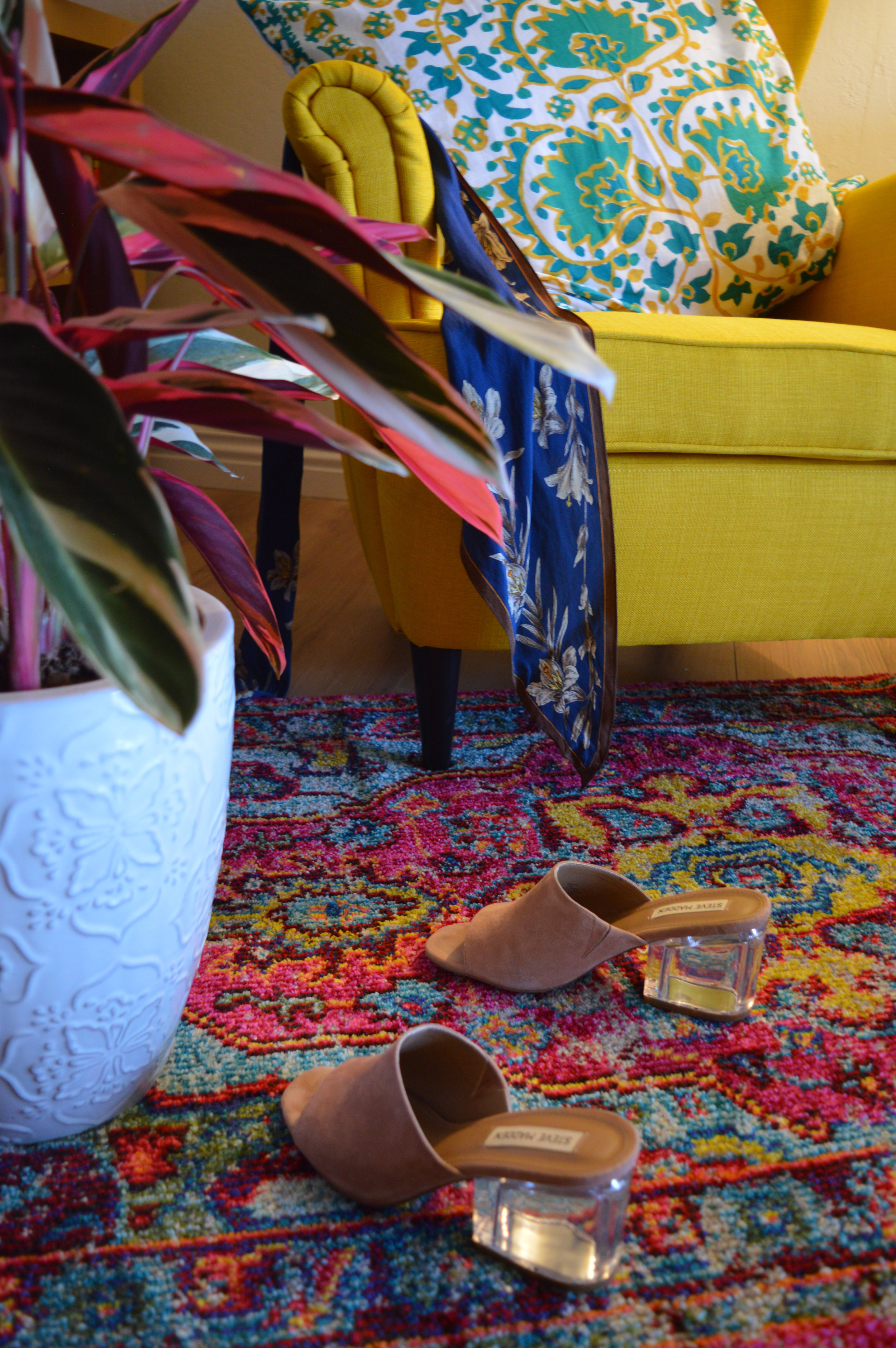Maximalism

Maximalism, an idea long prevalent in many art forms, emerged as a rebellion against Minimalism. With a motto of “more is more”, it strives to artfully combine clashing patterns, colors, textures and silhouettes to make contrasting things come together aesthetically. Although Maximalism has traditionally been more popular in interior design, it has recently been making quite a headway in fashion as well: ruched and bell sleeves, color blocking, wide leg pants and statement accessories are examples of a few such pieces.
As someone petrified of clutter, I find working with “more” scary; in fact, a stab at maximalism dismally revealed to me how muted my wardrobe is and how unadorned my walls are. So, naturally, I thought it would be fun to do a post on maximalism — except as a thrifty individual, to work with what I already own. And so, I reorganized my apartment a little, donned more accessories than I was comfortable with and emotionally blackmailed my boyfriend into a photo shoot to get to what I have here.
My personal maximalist creation uses both interior design and fashion. The foremost thing that stands out is the overwhelming color palette: Teal, magenta, yellow, orange and more. The vintage rug, the austere yellow chair and the teal patterned cushions contrast, but the boldness of the colors and the eastern patterns prevents the scene from overwhelming the eye. The warm, dull yellow filter adds a haze of drama that is indispensable to the atmosphere. It unifies the scene since its omnipresence prevents any other elements from standing out too much. Focusing on my outfit, the pants and accessories stand out the most. My pants mix a bell-bottom silhouette with a cut that is generally used in skirts. The non-traditional silhouette, along with the bright burnt orange makes the pants a Maximalist piece in themselves. To add to that, I’ve layered two vibrant necklaces along with two scarves onto my neck. The glowing, silver stones that frame the bracelets and necklace add symmetry to the jewelry, a tool that is key in separating Maximalism from clutter.
My piece is not only maximalist in the variation of color, patterns and silhouettes, but also the cultural associations it elicits. The thick, turquoise band feels antique: it looks Egyptian due to the marbled stones and iconic gold and turquoise. In contrast, the lustrous jewels on the necklace and bracelet are formal and austere, more Western than the rest. The western chiffon scarf feels quintessential to a proper, Western dress, and as a piece from the ‘60’s, adds variation to the time. Even the Moroccan lamp on the end table feels archaic, contributing to the relevance of time. It’s interesting to see how pieces from different portions of the world and different times fit in together. In a sense, it reveals how a space and outfit have so much room for revealing an individual’s personality by allowing them to channel their inspirations, travels and memories through the display.
I find something incredibly talented about finding a way to make ‘more is more’ work. While minimalism has taken the world by storm, arguably as a move by fast fashion retailers, I think it sometimes promotes laziness because it can be easier and formulaic to put together. Not to discount minimalism – nude and basic colors inspire me, and sometimes eschewing obvious elements can allow one to hone in on detail. However, I think maximalism is another talent that is worth exploring and may challenge your sense of style!









